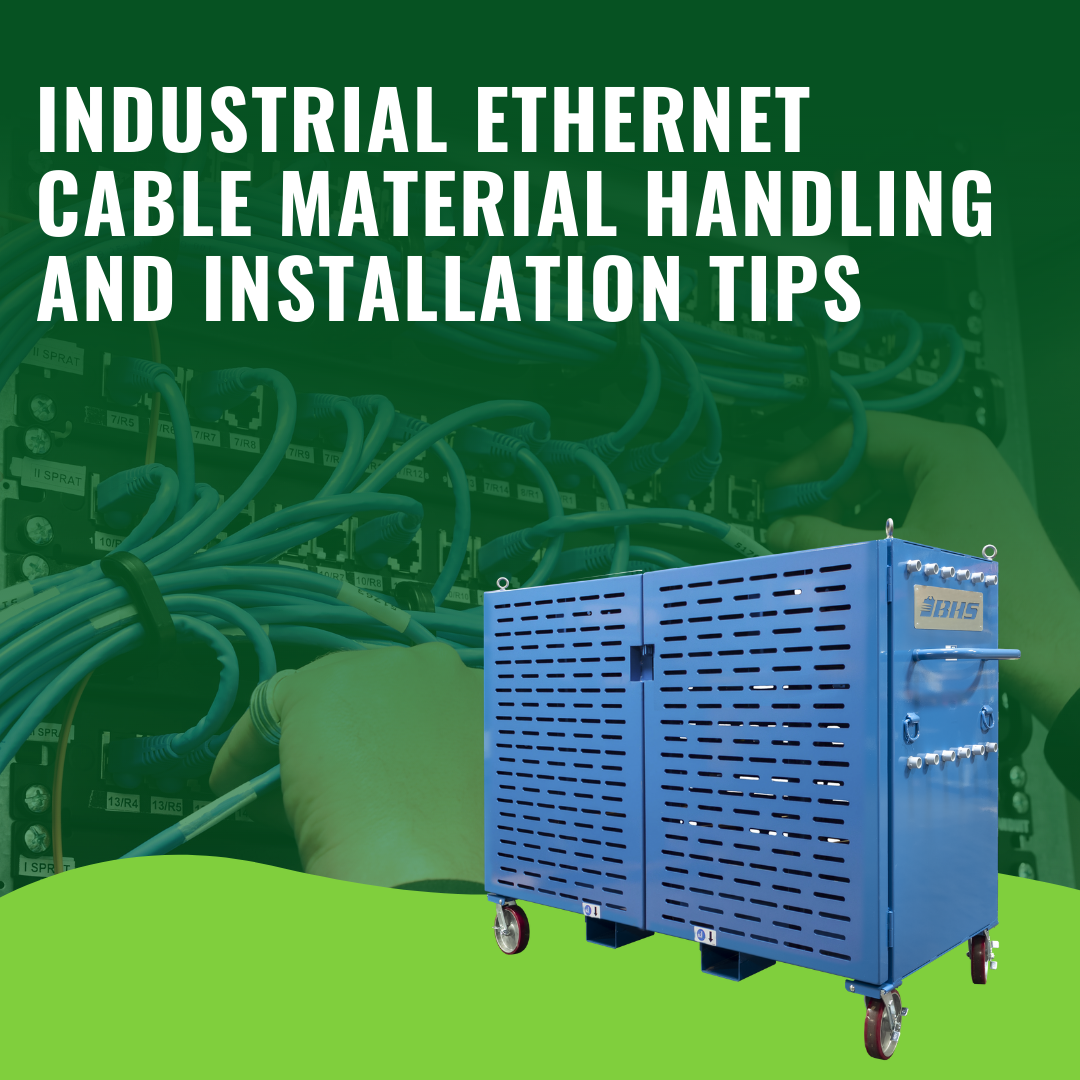We use cookies to make your experience better. To comply with the new e-Privacy directive, we need to ask for your consent to set the cookies. Learn more.
Industrial Ethernet Cable Material Handling and Installation Tips
Industrial ethernet installation isn’t a simple process; proper cabling requires plenty of planning, careful purchasing, and superior material handling. Simply designing the system can be challenging, particularly if the cable needs to run outdoors or near heavy equipment.

After adjusting for topology and other factors, it’s time to run the cable. That’s easier said than done — even with appropriate planning, industrial ethernet cable can present some unique issues.
Keep these basic tips in mind when installing ethernet:
Don’t Use Commercial Cable - Commercial ethernet cable is inexpensive and seems functionally identical to industrial Category 5E (CAT5e) or Category 6 (CAT6). Of course, it isn’t — there’s plenty of reasons to invest in industrial-grade products for industrial settings, but the simplest (and most compelling) is that office ethernet cable simply won’t work. The cable needs to resist extreme temperatures, crushing, and other harsh conditions imposed by the industrial environment.
Ideal industrial ethernet cable is industrial hardened, capable of handling long runs without signal degradation. Twisted-pair ethernet cabling with bonded pair technology should resist many of the electromagnetic hazards found in industrial environments. Even so, remember: All cables need to be routed correctly, regardless of the quality of their construction.
Avoid Routing Near Heavy Equipment - Specifically, avoid routing ethernet cable within five feet of arc welders, motors, lights, conduit, and any equipment that generates a strong magnetic or electric field. When ethernet cable must cross equipment or power lines, route it at a right angle. Ground ethernet stations properly and use shielded ethernet cable when running through conduit.
While CAT5e cable generally provides better shielding against interference than CAT6 in industrial settings, any exposure to strong fields will risk electromagnetic interference; planning the cable route carefully is the best way to ensure a functional system.
Likewise, it’s important to remember to plan for extreme temperatures, UV damage, and other factors that could threaten the cable in the long-term. When routing ethernet cable outside of buildings, use grounded metal tubes or appropriate cable ducts.
Pay Attention to Specification Sheets - While it may seem obvious, ethernet cables vary greatly in terms of shielding and tension load. Take care to protect cable from hazards that would exceed the manufacturer’s specifications, particularly when routing near corners or sharp edges. Don’t make assumptions, even if you’ve had success with other ethernet projects; the specification sheets are crucial information.
Regardless of the quality or strength of your cabling, remember that occasional kinks and loops can have an outsized effect on performance over time. Try to keep cable runs straight to prevent damage, particularly when routing cable through ducts or conduit. Use strain relief at the ends of your cables and their connectors.
Use Reels Suitable for Ethernet - Industrial ethernet cable is typically much less fragile than off-the-shelf commercial cable, with higher pulling tensions and better resistance to elongation. Many industrial CAT5e cables, for instance, have a maximum pull tension of 75 pounds, which is three times the maximum pull tension of a commercial cable.
Even so, installers should avoid pulling with excessive force — a few inches of “extra" ethernet cable could cause significant signal delay, inhibiting the effectiveness of the implementation. Choose a wire reel or pull cart that will make your ethernet cable more accessible during installation — and limit the force of each pull.
Use Ergonomic Material Handling Equipment - Even when wire pulls don’t require excessive force, ergonomics is an important consideration. Ensure that wire can be pulled comfortably, keep it at an ergonomic height, and reduce the strain of transporting bulk supplies of cable throughout the installation site.
Again, the right equipment will make all of this much easier. BHS Wire Pull Carts (WPC) feature a slim profile and fork pockets for easy transfer/positioning, and with a max weight of 3,000 pounds, the WPC is sufficient for most industrial ethernet jobs. Ethernet cable is valuable, and the WPC’s padlock hasp helps to protect wire assets onsite. It also features PVC wire guides that ensure smooth pulls, preventing damage and elongation. To learn more about Wire Pull Carts and other solutions for handling wire and cable, contact Solus Group at 314-696-0200.
